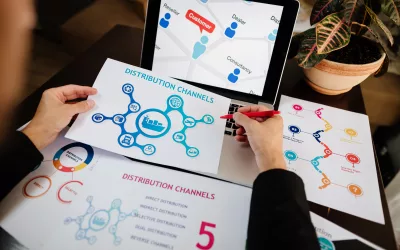In the landscape of today’s digitally-oriented market, one concept stands out as the gold standard for customer engagement: Omnichannel marketing. This strategy redefines the traditional understanding of marketing by harmoniously blending various platforms to deliver an all-inclusive, seamless customer experience.
Understanding the Essence of Omnichannel Marketing
Omnichannel marketing is not just about having multiple channels for communication, but rather, ensuring consistent, personalized, and contextual interaction with customers across all channels. This approach allows businesses to meet their customers at the point of their need or preference, which can lead to a significant increase in engagement and conversions.
For instance, a customer might start shopping for a product online, then get a notification on their mobile app about a related product, and finally make a purchase in-store, experiencing a consistent brand message throughout. The entire journey is seamless, engaging, and personalized, which characterizes the essence of omnichannel marketing.
The Power of Data in Omnichannel Marketing
The lifeblood of successful omnichannel marketing lies in its data-driven nature. Today’s technology offers businesses the ability to collect and analyze data at every touchpoint, providing a comprehensive view of customers’ behavior and preferences.
By leveraging this data, businesses can design a more personalized and targeted approach to marketing. Imagine sending a tailored email to a customer about a product they just viewed on your app, offering a special discount as a gentle nudge towards a purchase decision. This level of personalization, made possible by data, can significantly enhance the effectiveness of your marketing campaigns.
How to Implement an Omnichannel Marketing Strategy
While the benefits of omnichannel marketing are clear, the implementation requires careful planning and execution. Here are some key steps to consider:
- Understand your customers: Carry out a thorough analysis of your customer demographics, behaviors, preferences, and needs. Use this data to create detailed customer personas.
- Audit your channels: Identify all the possible channels of interaction, such as social media, email, mobile app, and physical stores. Evaluate how each channel is currently performing and where improvements are needed.
- Develop a unified message: Ensure your brand’s messaging is consistent across all channels. This helps reinforce brand recognition and builds trust with your customers.
- Leverage technology: Use marketing automation tools and customer relationship management (CRM) systems to streamline your processes, manage your data, and deliver personalized content.
- Monitor and refine: Regularly track your performance, gain insights from analytics, and refine your strategy based on results.
The Future is Omnichannel
In a world where customers expect convenience and personalization at every turn, businesses can’t afford to ignore the power of omnichannel marketing. By adopting this strategy, businesses can elevate their customer experience, foster customer loyalty, and ultimately drive growth and success in today’s dynamic market landscape.





0 Comments